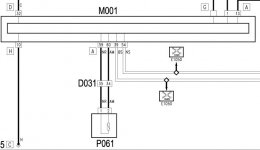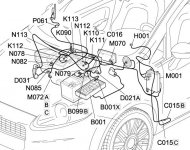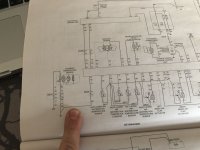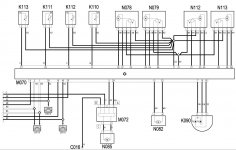MrMogensen
New member
- Joined
- Mar 6, 2018
- Messages
- 38
- Points
- 12
During these cold months I want to be able to cheat the Outside Temp. Sensor into believing it's hotter than 0 degrees celsius .
If temp. is 0 or less then I am not able to turn on A/C.
Yes I can click the button and it lights up, but the little frosty logo on the climate display does not appear = A/C is not allowed on.
NOTE: It's the automatic dual zone climate version.
I called FIAT about this during my first Winter and they told me it's normal and that other car makers use the same system... Does an A/C system really die if turned on in -5 degrees celcious? I don't believe it so I want to cheat a little :devil:
Want to install a variable resistor somewhere between the outside temp.sensor (in the sidemirror) and the Climate Control Unit. With this I should be able to cheat the car into thinking it's hotter outside.
QUESTION:
Haynes wiring diagram 12*24
I am guessing that D031 is the plug between passenger front door and frame. But where is D008 which seems to be a plug between D0031 and the control unit? It's hard to follow the bundle of wires cause they are split up and gathered along the way between door and centre console?
If temp. is 0 or less then I am not able to turn on A/C.
Yes I can click the button and it lights up, but the little frosty logo on the climate display does not appear = A/C is not allowed on.
NOTE: It's the automatic dual zone climate version.
I called FIAT about this during my first Winter and they told me it's normal and that other car makers use the same system... Does an A/C system really die if turned on in -5 degrees celcious? I don't believe it so I want to cheat a little :devil:
Want to install a variable resistor somewhere between the outside temp.sensor (in the sidemirror) and the Climate Control Unit. With this I should be able to cheat the car into thinking it's hotter outside.
QUESTION:
Haynes wiring diagram 12*24
I am guessing that D031 is the plug between passenger front door and frame. But where is D008 which seems to be a plug between D0031 and the control unit? It's hard to follow the bundle of wires cause they are split up and gathered along the way between door and centre console?







